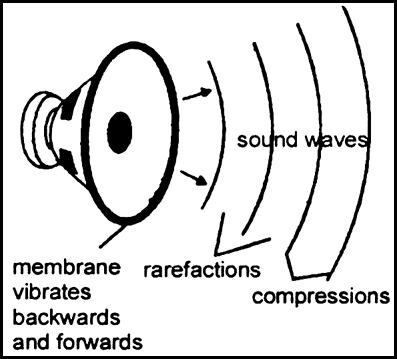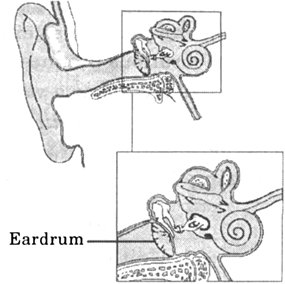Define the following terms :
(i) Frequency
(ii) Amplitude
(iii) Decibel
(iv) Music
(v) Noise
(i) Frequency: Frequency is defined as the number of oscillations per second.
(ii) Amplitude: Amplitude is defined as the maximum displacement of a particle from its rest position.
(iii) Decibel: Decibel is the unit to measure the loudness of sound.
(iv) Music: Sound which is pleasant to ears is called music.
(v) Noise: Sound which is unpleasant to ears is called noise.
What are the ill-effects of noise pollution? How can we control noise pollution?
Ill-effects of noise polution:
Noise effects has adverse effects on our body and health. It affects mental peace and health. Noise pollution is the root cause of many mental disorders like anxiety, depression etc. Apart from that physical disorders like hypertension, skin diseases, lack of sleep etc. Noise pollution affects sick people more.
Measures to control noise pollution are:
1. Honking unnecessarily should be avoided.
2. Playing loudspeakers at residential areas should be avoided.
3. Trees and plants should be extensively planted along the road sides to absorb sound and control noise pollution.
How is sound produced? How does it travel from one place to another? Draw a diagram also.
Sound is produced by the vibrations of the body. Only vibrating bodies produce sound. Those bodies which produce vibrations produce sound but when they stop vibrating they also stop producing sound.
Sound reaches from one source to another. It travels from one point to another through some medium. Sound waves can travel through air, liquid and even through solids. What we hear one another, that sound travels through air medium. But we can hear some body talking in next room too, that means sound waves have crossed wall to reach us. Dolphins and whales communicate in water.
How do we hear different sounds?
We have specially designed organs for receiving the sound waves and our brain interpret these waves into sounds that we hear.
Ears are our hearing organs. Ears are specially designed by nature to grab and transit sound vibrations to our brain. The outer funnel like part of the ear collects the sound waves and send them through a long canal like part to the inner part. These vibrations reach a thin stretched membrane called eardrum. When these vibrations touch eardrum the eardrum starts vibrating and sends these vibrations to inner ear, from which brain receives the vibration. In this way one becomes able to hear various sounds.
